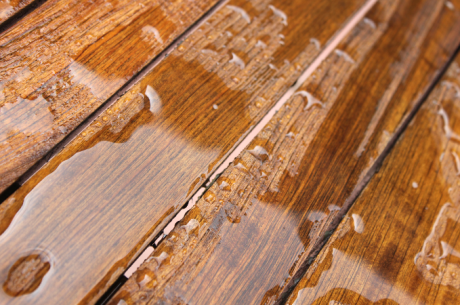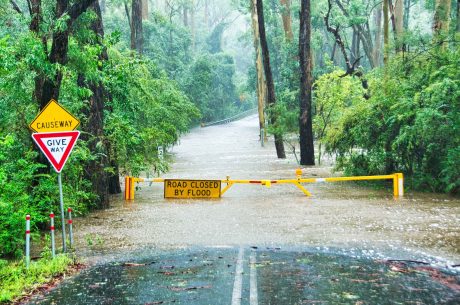In this comprehensive guide, we’ll provide you with the right knowledge and techniques needed, so you’ll know how to fix water-damaged wood in your home. Let’s dive in!
Being a homeowner often means wearing many hats, from chef to handyman and even detective, when it comes to solving household mysteries. Among these challenges, dealing with water-damaged wood is a common one. It’s a problem that can’t be ignored, but you don’t have to call in the experts every time a leak or a spill threatens your beautiful wooden surfaces.
Understanding the Problem
Before looking for possible solutions, it’s important to make sure that you understand the root cause of the issue. To do this, you need to first identify the source of the water damage. Is it from a leaky roof, a burst pipe, a flooded basement, or just a persistent dampness in a certain area of your home? Pinpointing the source will help prevent future occurrences once you’ve tackled the current problem.
Here are some common causes of water damage to wood:
- Leaky Roofs: Check your roof for any missing or damaged shingles, as well as damaged flashing. Water can seep through these vulnerable areas and make its way into your home.
- Plumbing Issues: Inspect your plumbing for any leaks or bursts in pipes. Even a small, unnoticed leak can cause significant damage over time.
- Poor Ventilation: Inadequate ventilation in areas like bathrooms or basements can lead to excess moisture accumulation, promoting wood rot and mold growth.
- Flooding: Whether from heavy rains or plumbing mishaps, flooding can saturate wood and cause severe damage. Ensure your home’s drainage systems are functioning properly to prevent this.
- Condensation: High humidity levels indoors, especially in cold seasons, can cause condensation on windows and walls. This moisture can also affect wooden surfaces if not properly managed.
- Spills and Accidents: Sometimes, water damage occurs from everyday accidents like spills that aren’t cleaned up promptly. These localized issues can be easier to fix.
Ways on How to Fix Water-damaged Wood in Your Home

Now that you’ve identified the source of the water damage, let’s proceed on how to fix water-damaged wood in your home:
Safety First
Before starting any repair work, ensure your safety. Wear appropriate protective gear, including gloves, safety glasses, and a mask, especially if you suspect mold growth.
Remove the Source of Moisture
If the water damage is ongoing due to a leak or plumbing issue, address it immediately to prevent further damage. Turn off the water supply if necessary and repair the source of the problem.
Assess the Damage
Examine the affected wood closely. Determine the extent of the damage. Is it superficial, or has the wood rotted extensively? This assessment will guide your repair approach.
Dry the Area
Properly drying the damaged area is crucial. Use fans, dehumidifiers, or natural ventilation to thoroughly dry the wood. You may need to wait several days for it to be completely dry, as even slight moisture can lead to mold growth.
Remove Damaged Wood
If the wood is severely compromised, you must remove the affected sections. Use a chisel, saw, or rotary tool to cut away the damaged wood until you reach dry, healthy wood. Be thorough in this step to prevent the spread of rot.
Treat for Mold
If there’s any sign of mold or mildew, it’s essential to treat the area. Use a mixture of water and white vinegar, hydrogen peroxide, or a commercial mold cleaner. Scrub the area gently but thoroughly, then allow it to dry completely.
Fill and Sand
For smaller areas or minor damage, fill cracks, holes, or gaps with an appropriate wood filler. Once the filler is dry, make sure to sand the surface until it’s smooth and level with the surrounding wood.
Stain or Paint
Depending on the type of wood and your preference, you can either stain or paint the repaired area to match the surrounding woodwork. Be sure to use a finish that’s suitable for indoor or outdoor use, as needed.
Seal and Protect
Apply a wood sealer or protective finish to the entire surface, not just the repaired area. This helps prevent future water damage and maintains the wood’s integrity.
Prevent Future Damage
To avoid future water damage, consider installing proper ventilation in damp areas, insulating pipes, maintaining your roof, and promptly addressing any leaks or spills.
Remember that while DIY repair is feasible for minor water damage, more extensive or structural issues may require professional water damage restoration. Don’t hesitate to call in experts if you’re unsure about the extent of the damage or if safety is a concern.
Final Thoughts
Fixing water-damaged wood in your home is a manageable task when approached systematically and safely. Understanding the source of the water damage and addressing it promptly is crucial to prevent future problems. Whether it’s a leaky roof, plumbing issues, poor ventilation, flooding, condensation, or a simple spill, identifying and addressing the root cause is always the first step in the repair process.
If you need help with water damage in your home, PuroClean Zephyrhills is here for you. Our team has been working tirelessly to assist homeowners like you in restoring their homes after water damage incidents. With our expertise and professional services, you can have peace of mind knowing that your home is in good hands. Reach out to us today!




 PuroClean Certified Restoration Specialists
PuroClean Certified Restoration Specialists